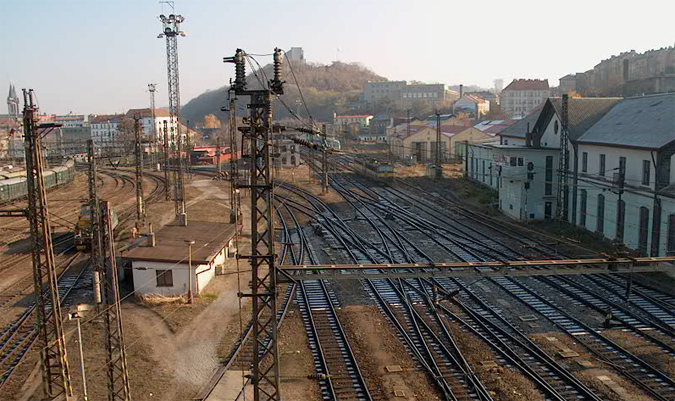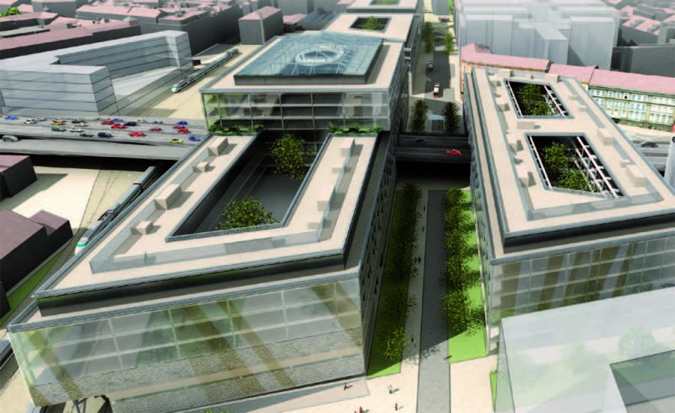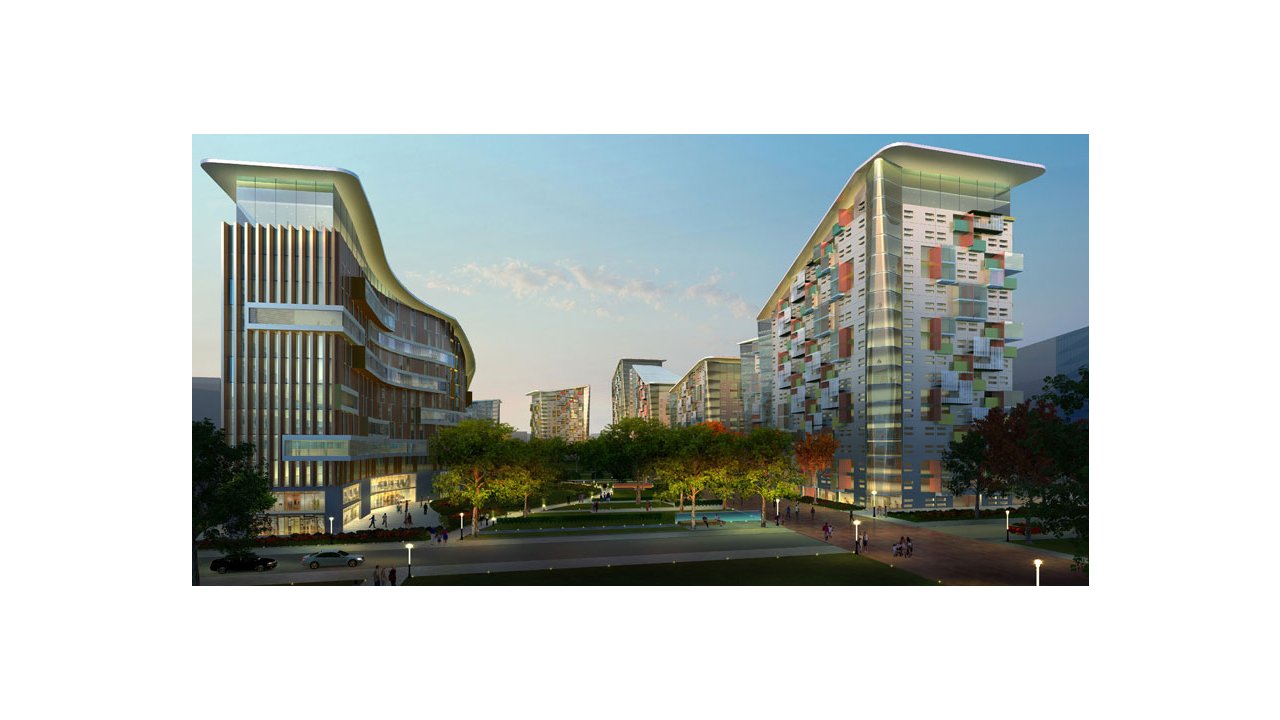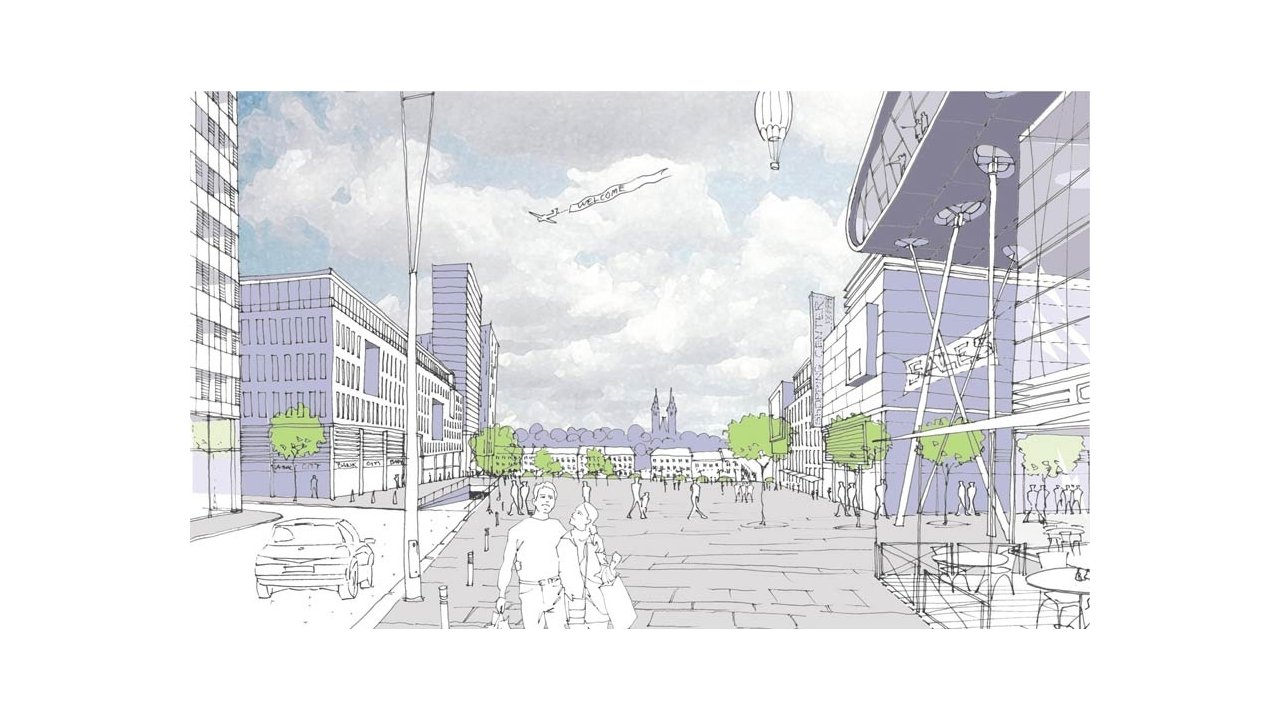Changes are coming to Prague’s brownfield sites. In the last twenty years, a number of key investments have resulted in a greater provision of pleasant spaces for residential and commercial use in Prague. But the city still has its fair share of urban wasteland, poorly designed infrastructure, and neglected neighbourhoods.

© Arnika
In 2009, a report commissioned by Arnika – a non-governmental organization dedicated to improving the Prague environment – concluded that in terms of its brownfield sites, ‘Prague has got an extraordinary opportunity to transform itself into a city setting directions in modern concepts of construction’. Three years later, how are these major projects shaping up?
1. The Bubny Station development
Orco Property Group started business in Prague in the 1990s, investing in and redeveloping prestigious properties in the largely residential Vinohrady district. At the time, co-founder Jean-François Ott was even dubbed the ‘Laird of Vinohrady’. But twenty years on, a string of financial difficulties, coupled with political deadlock, has meant their latest plan for redeveloping a key area of Prague is making slower progress than was hoped.
Key to Orco’s Central European development plans – and the company’s future – is the site of the former Bubny railway station in Prague 7, which was bought six years ago for 1.1bn CZK from Czech Railways. Here, in collaboration with FNA Architects, Orco’s intention is to develop a ‘city within a city’, transforming a much-neglected plot of land into an urban/residential ecosystem, with offices, apartments, malls, hotels, a hospital – and even a university.
The loop in the river at Holešovice has long attracted developers’ attention, and is already home to key new initiatives, including the waterside Prague Marina and the DOX contemporary art gallery. But the new plan, which would see more than 600,000 square metres developed over the course of a decade, dwarfs anything that has yet been attempted.
Construction projects of this scale typically stall for two reasons – funding and questions concerning land use and conservation. One of the major problems for any developer in the area is deciding how the transport infrastructure – which everyone knows is a complete mess – would be redrawn. Orco’s plans for reconnecting the two halves of the neighborhood while maintaining key public transport connections are widely thought of as providing the right kind of solution. But questions remain about the height of buildings, the number of green areas, integration with the neighboring UNESCO area, and conservation of existing industrial heritage.
Hence, despite the fact that Prague City Council recently approved the drawing up of a new master plan for the Bubny area by the end of 2013, the current ban on construction remains in place, as a result of which, Orco’s plans and those of other developers have been left on hold.
Last week has brought some better financial news for Orco, at least. Shares rose on the news that Radovan Vitek, the billionaire owner of CPI Group, had reportedly bought 21% of the company. And if the building ban is finally lifted as a result of negotiations taking place in the coming weeks, Orco should be on plan to begin the construction of the first buildings in 2014.
2. Smíchov Railway station development
Smíchov, best known for the Staropramen brewery, is now increasingly viewed as the heart of Prague’s flourishing internet startup community. It’s also home to a series of unlovely railway freight yards that are now ripe for development.
For the last six years or so, Sekyra Group, in conjunction with Czech Railways, have been working on a project to redevelop the area around the station at Smíchov, with the aim of restoring and revitalizing the lower left bank of the Vltava. An earlier land use arrangement prohibited any alterations of the railway area. However, it is still hoped that a revitalized station will form part of any future development.
As with the Bubny project, the key factors in any change of use fall into four key areas; the provision of public green spaces, the height of the buildings, the proximity of the UNESCO protected zone, and the improvement of the transport infrastructure.
Sekyra’s project proposes the creation of a ‘multi-functional neighborhood’ extending some 210,000 square meters down the left bank of the river south of Andĕl. Warehouses would be replaced, and specially-designed parks and pedestrian zones would reconnect the surrounding green hills with the Vltava valley, culminating in a riverside swimming pool and a recreational riverside path linking to the south-west of Prague.
According to the plans, Sekyra Group’s ‘Smíchov City’ will feature a new north-south ‘green’ boulevard, a tree-lined avenue with seating areas, a brand new commercial center, and pleasant housing to encourage job growth. The plan also envisages a new traffic hub, with a regenerated bus station, underground and tram stop, bike lanes and a park-and-ride facility.
The project has already won support at a municipal level. According to the mayor of Prague 5, Radek Klima, “we have submitted an initiative to change the zoning plan and hope that the City will discuss and approve it as soon as possible, so that Smíchov can change for the better”
3. Masaryk Station and surroundings
Unlike the first two areas mentioned in this article, Masaryk Station and its environs fall completely inside the UNESCO World Heritage zone. Add to this the fact that the late-empire style station is the oldest in Prague – and one of the oldest in Europe, having opened in August 1845 – and it’s clear that battle-lines were soon going to be drawn in the story of its future development.
To make matters even more complicated, any changes of use of the plot of land in question require the approval of two municipal districts, since the region is on the border of Prague 1 and Prague 8.

Masarykovo nádraží
Early plans for a mixed use commercial and residential area drew the ire of conservationists, who insisted on the preservation of the historic buildings. The Prague Technical Museum likewise put forward a plan to keep the station as a city-center railway museum. Another plan proposed the greening of the surrounding area in order to make a new park linked to Vitkov hill – a project that won the sympathy of 87% of respondents in an Arnika questionnaire.

Early plan for Masarykovo nádraží redevelopment
However, the decision to make Masaryk Station one terminus of a new 120mph train service, directly linking the city to Václav Havel airport and to Kladno beyond, has changed the whole picture. This massive infrastructural project, slated at 35bn CZK, is still very much alive, and may begin construction two years from now. Among other things, this would mean that only half of the original area of the station plot (about 75,000 square metres) would be available for re-development.
Masaryk Station Investment (in which development investors Penta hold an 80% share) is jointly committed with Czech Railways to the refurbishment of this crucial site in the city center. If the high-speed rail project does go ahead, then Masaryk Station – which, with its historic façade, roof and pillars, has played such an important role in Prague’s heritage – would form an important part of their plans.
—
The construction of modern buildings in an urban environment as sensitive as Prague’s has always been fraught with difficulties. And of course, the city has suffered from a long history of alleged and actual corruption, much of it disguised by the contractual delays and setbacks which are normal for such large-scale projects. The requirement for wise, fair and transparent dealings – both with public funds, private investors, and contractors – means that such developments may still have to surmount significant hurdles before they see the light of day.
But there is a majority in favour of changing Prague’s urban environment for the better. Assuming funds can be raised, and political and public arguments resolved, there’s no reason why these sites should not be redeveloped for the benefit of all.
Alex Went is the curator of The Prague Vitruvius an illustrated guide to the city’s architecture.
Related articles












 Reading time: 6 minutes
Reading time: 6 minutes 

































